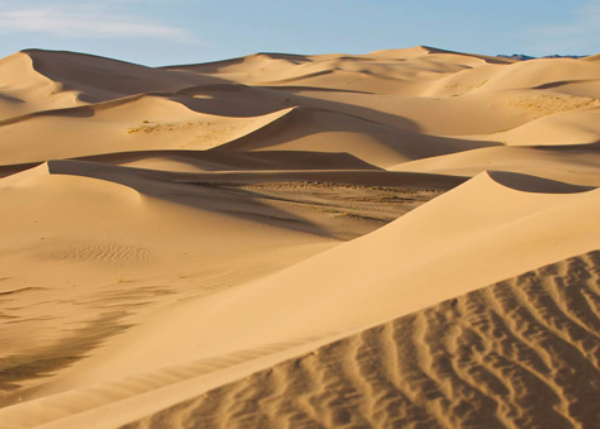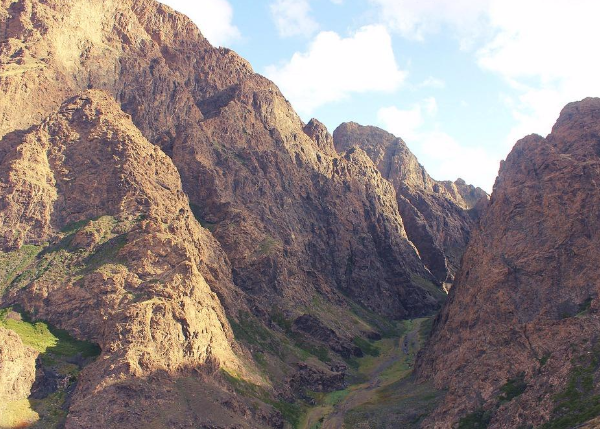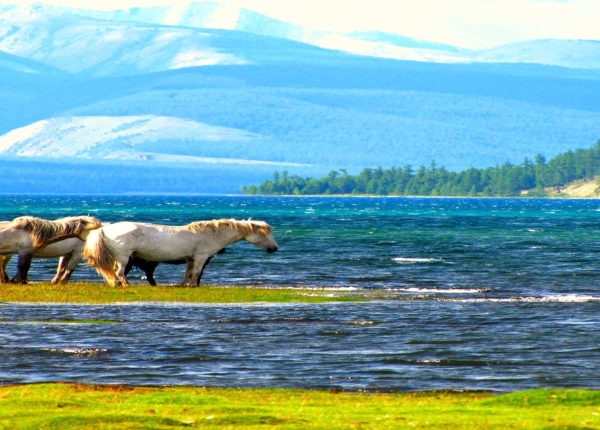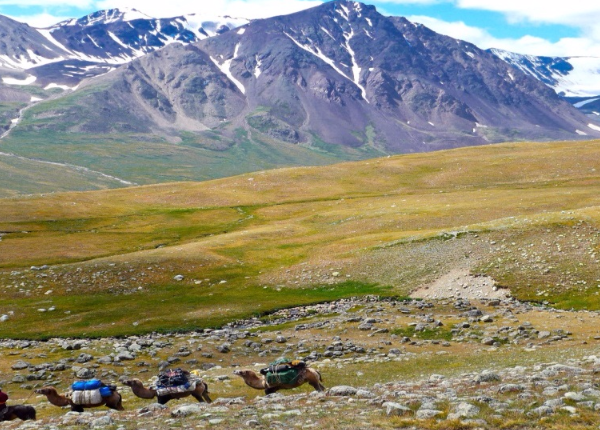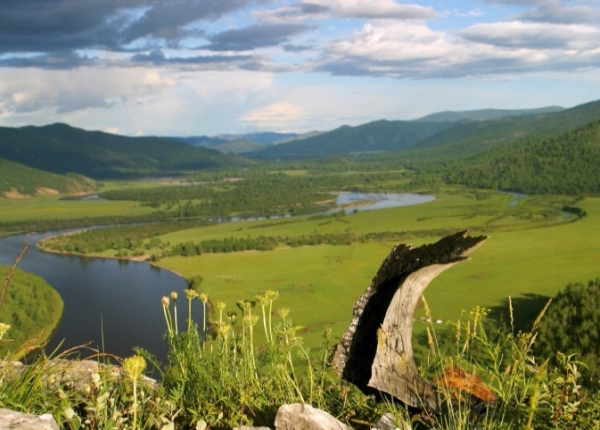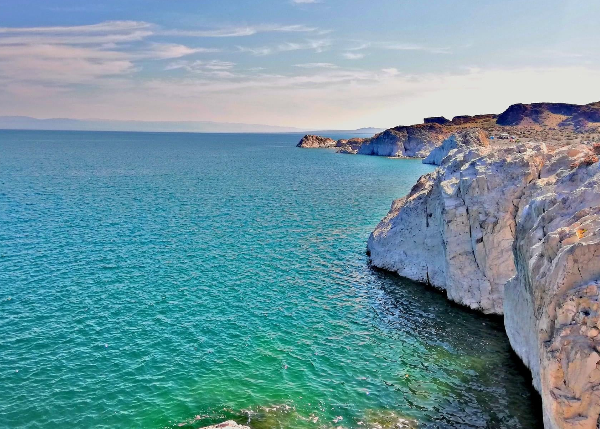A journey through Mongolia's vast landscapes, immersing yourself in the unique beauty of its enormous land. Connect with the local culture by visiting nomadic families, exploring their way of life, and forging new friendships along the way.
Day 1: Ulaanbaatar
Arrival in Ulaanbaatar. Your guide will welcome you and pick you up from the airport. Have dinner and check into the hotel.
Day 2: Baga Gazriin Chuluu
Our expedition begins with a 4-5 hour drive to Baga Gazriin Chuluu, covering approximately 250 km. This place is a picturesque mountain at an elevation of 1,751 meters in the Granite Belt of Mongolia. We will explore the area by walking. Stay overnight in Ger camp. (B/L/D)
Day 3: Tsagaan Suvarga
After breakfast, travel to Tsagaan Suvarga about 280 kms for 5-6 hours. This stunning area is 30 meters high white limestone formation and created over thousands of years by natural wind. Stay overnight in Ger camp. (B/L/D)
Day 4: Yol valley & trekking
After breakfast, we will drive to Yol valley about 220kms. This picturesque place is nestled between the beautiful peaks of the Gurvan Saikhan Mountain and shelters rich wildlife. Visit Gobi museum and trekking through the valley. Stay overnight in Ger camp. (B/L/D)
Day 5: Khongor Sand Dune
Travel to Khongor sand dunes for 180kms. Known as Singing sand dunes, the Khongor dunes are up to 300ms high, 15kms wide, and 180kms long. In the evening, we will walk through the Golden sand dunes. The view is incredible from top of the dunes. Stay overnight in Ger camp. (B/L/D)
Day 6: Visit to nomad family & camel riding
Today we will visit a nomad family and have a chance to see nomadic life in the Gobi. You can taste traditional dairy products made of camel cows’ milk. Optional camel riding is available. Move back to Ger camp. Stay overnight in Ger camp. (B/L/D)
Day 7: Bayanzag
Continue travel to Bayanzag for 170kms. Here you will see saxual forest in the Gobi desert and red flaming cliffs, which formed by the erosion of the sand and rock over many thousands of years. This is the place where dinosaurs were lived 70 million years ago, and is internationally famous for its dinosaur remains of complete skeletons, eggs and hatchlings of the Cretaceous Period. Stay overnight in Ger camp. (B/L/D)
Day 8: Ongi Monastery & trekking
Travel to Ongi Monastery ruin for 140km. Walking along the area where the ancient monastery ruins are situated. Stay overnight in Ger camp. (B/L/D)
Day 9: Drive from desert to steppe
Drive to Orkhon valley for 5-6hours about 240kms. Transitioning from the Gobi to the mountain and steppe zone. In the evening, enjoy a camping experience in the picturesque steppe landscape. (B/L/D)
Day 10: Orkhon waterfall in UNESCO registered Orkhon Valley cultural landscape
In the morning we pack our camping gears and drive to Orkhon Waterfall. Today we will visit nomads who are living in the Khangai, steppe and mountain area. You will be invited to their Gers and offered to taste traditional dairy products like aaruul-dried curds, Mongolian salty milk tea-Suutei tsai, and biscuit-Boortsog and so on. You can make friends with nomads.
Day 11: Kharakhorum & Erdenezuu
After breakfast, start driving to Kharakhorum, the ancient capital city of the Great Mongol Empire. It was also considered to be the centre of the world. We will visit to the Kharkhorum museum as there are no remaining ruins to visit. Next to the museum, discover Erdenezuu Monastery, once the epicentre of Buddhism and among the earliest monasteries constructed in Mongolia. Overnight sleep in a tourist camp.
Day 12: Taikhar rock
Travel to Tsetserleg town, the center of Arkhangai province for 130kms. Visit Zaya Gegeenii Khuree, a large old Buddhist monastery, remarkably intact, preserved as a museum-but with an active community of monks. Then we continue our drive to Taikhar rock, is 25 meters high a mysterious steep-sided pinnacle of granite. Stay overnight in Ger camp. (B/L/D)
Day 13: Lake Terkhiin Tsagaan Nuur
Travel to Lake Terkhiin Tsagaan Nuur for 180kms, is an astonishingly beautiful lake, which was formed by dam of lava flows from volcanic eruption many millennia ago. On the way we will see river Chuluut, flows through a sheer basalt canyon which extends 100 kilometers. Stay overnight in Ger camp.( B/L/D)
Day 14: Trekking to Khorgo
Today we will trek to Khorgo mountain, a dead volcano which lies east of the lake Terkhiin Tsagaan. The volcanic crater of the mountain is 200 meters wide and 100 meters deep. The northern slope is covered with Siberian larch forest. Stay overnight in Ger camp. (B/L/D)
Day 15: Jargalant
Travel to Shine Jargalant soum of Khuvsgul province for 90 kms. Today we will be exploring beautiful flowers covering the valley. In the evening, enjoy a camping experience in the picturesque steppe landscape (B/L/D)
Day 16: Khuvsgul Lake
Travel to Murun town, the center of Khuvsgul province for 125kms. After lunch at local restaurant continue travel to the crystal clear lake Khuvsgul for 110kms. Stay overnight in Ger camp. (B/L/D)
Day 17: Walking around the lake
Today we will enjoy walking around the lake, where we explore rare medical herbs and wildflowers. Also you can climb up a surrounding mountain to get a panoramic view over the lake. Stay overnight in Ger camp. (B/L/D)
Day 18: Uran Togoo Extinct Volcano
Now we head back to Ulaanbaatar. On the way we will make an overnight sleep next to Uran Togoo mountain- an extinct volcano with a crater of 600m wide and 50m deep and explore surrounding natural beauty. We can go hiking in the mountains. In the evening, enjoy a camping experience in the picturesque steppe landscape (B/L/D)
Day 19: Amarbayasgalant monastery
In the morning, after we pack our camping gears, travel to Amarbayasgalant monastery for 260kms, is one of the three largest Buddhist centers in Mongolia. Arrival at Amarbayasgalant monastery. Visit and explore. Stay overnight in Ger camp. (B/L/D)
Day 20: Ulaanbaatar
After breakfast, we will start driving to Ulaanbaatar on a paved road for 280 km, anticipating a journey of 5-6 hours. We will be delighted to drop you off at your hotel. Thank you for joining us on this memorable journey.
Optional airport service for your departure from Ulaanbaatar or tour extension are available based on your wishes*
Highlight
Baga gazyn chuluu
Situated about 37km northwest from the centre of Delgertsogt Soum, Dundgobi Aimag. This area of granite surrounded by flat plains is located 1768m above sea level covering 300 sq km area.
Show more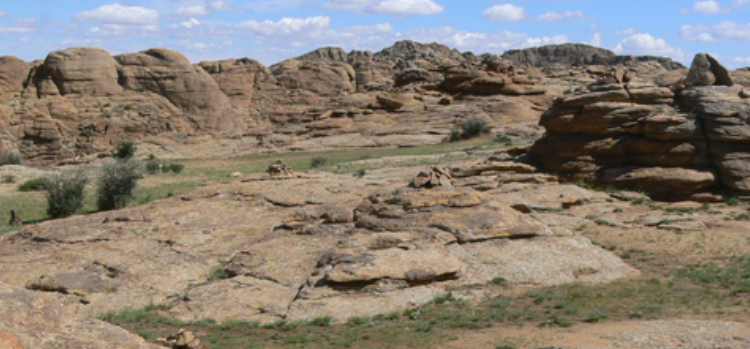
Tsagaan suvaraga(White stupa)
It was formed over time due to the erosion of a sedimentary mud in the sea bottom and looks like a stupa from far distance. From Far East it looks like a city ruin or a settlement. But, from west it looks like a flat steppe. During the strong storm, herds once died falling into the fissure which is 60m high, about 400m wide and has almost 900 steep banks.
Show more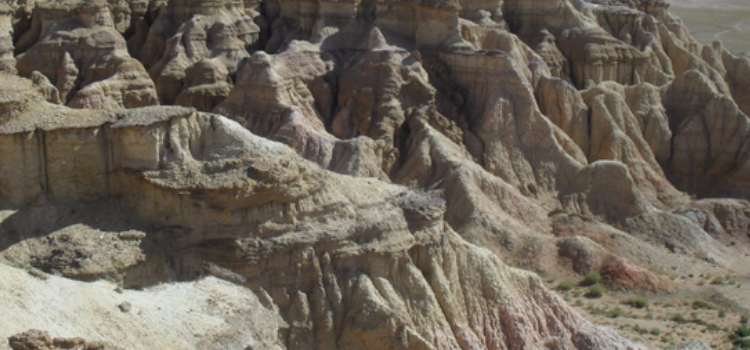
Yolyn am – Vulture gorge
.Yoliin Valley is the narrow canyon of a river that flows through Zuun Saikhan Mountain (2,816m above sea level). The gorge has sheer rock walls with a height of 200m in the central part of the gorge. It has been protected since 1965 and has an area of 70 square kilometers of strictly protected area. A spring is two or three kilometers long. The wind strongly flows through gorge and freezes into a thick corridor of ice that stretches along for a distance
Show more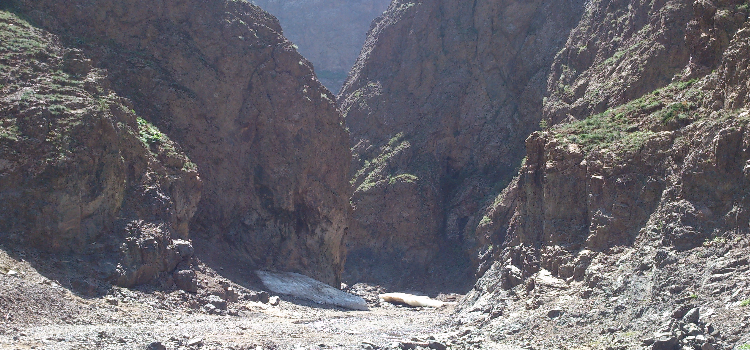
Khongorym sand dunes
This 180km long range of sand dune is situated at back of Mount Sevrei and Zuulun on west of Mount Gobi Gurvan Saikhan in Umnugobi Aimag. This sand dune is 3-15km wide and 15-30m high. Hundreds of sand dunes will be appeared from top of the Khongoryn Els. The scenery is brilliant with Rocky Mountains on the south, sand dunes in the centre and a river oasis on the north. Floodwater coming down from Mount Zuulun flows through the sand dune and absorbs into the soil. This absorbed water gives rise to a small river Khongor which flows for about 10km to west along the sand dune. At back of the sand dune there are several tourist camps from where one can reach the sand dune by riding or trekking on a camel.
Show more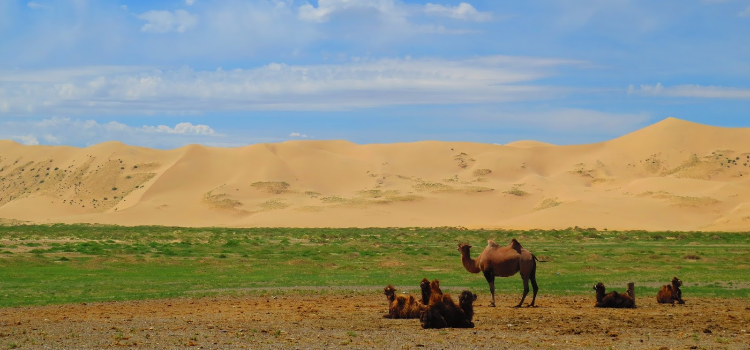
Nomadic life
Nomadic life thrives in summer and survives in winter. Considering climatic conditions, especially during winter, such lifestyle may seem to the outside world to be a very hard way of living. However, Mongolians have developed for centuries such qualities as strength and resilience that are essential for survival in this harsh nature, which is their cherished homeland. Mongolia is the land of the horse. Any nomad can ride as well as he or she can walk or run.
Show more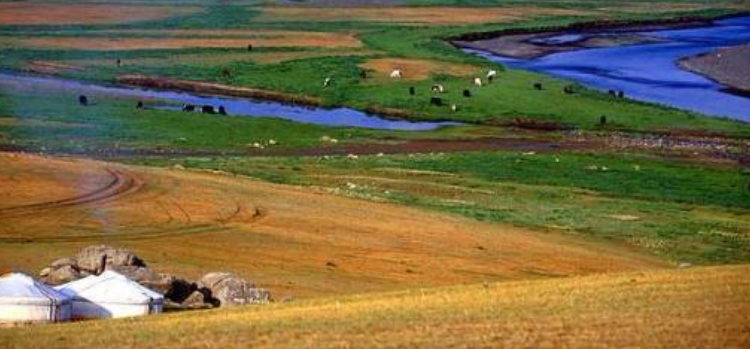
Baynzag
A lot of dinosaurs’ findings such as skeleton & dinosaur’ eggs have been found there. Before reach in Bayanzag, we will see Gobi precious stone market. It is really interesting. American zoologist Roy Chapman Andrews named this place as “End of the World”. As scientists defined it was an inland sea bottom some 200 million years ago. The Flaming Cliffs themselves are very imposing from a distance, and are particularly fiery in the light of the setting sun, and it is an interesting place to wander about to get a closer look at one of the world’s most famous paleontological sites
Show more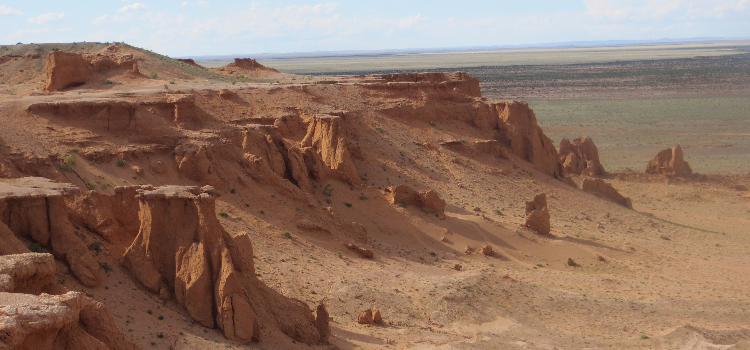
Ongi monastery
One of the biggest monasteries in Mongolia, Ongi was founded in 1660 and consisted of two temple complexes on the North and South banks of the river Ongi. At its heyday, Ongi monastery grounds housed around 30 temples, 4 big Buddhism universities and over 1000 monks at a time. During 1930s, communism spread throughout Mongolia.
Show more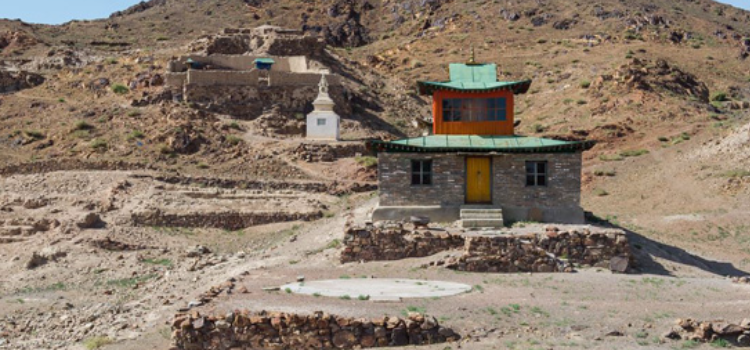
Karakorum Ancient capital
Karakorum was the capital of Great Mongolia Empire in thirteenth century. It is located on the right bank of Orkhon river, 400 km south-west of Ulaanbaatar which is the current capital of Mongolia. All around this stronghold, craftsmen's and traders' quarters and other houses were gradually built, until, by about 1230, the area had taken on the appearance of a town.
Show more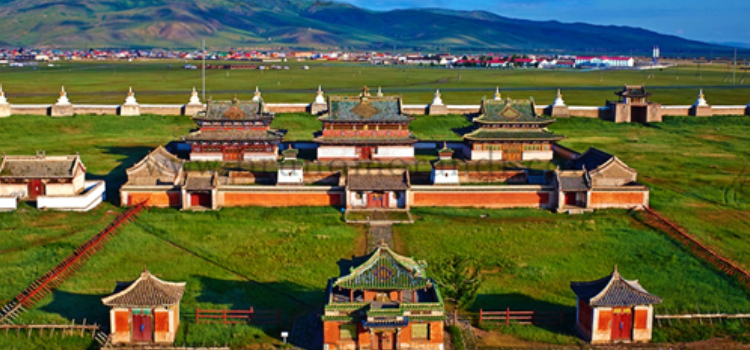
Taikhar stone
Thaikhar stone 20m high, big granite Taikhar rock has an interesting story. Once upon a time, a giant snake came out of a hole and started swallowing local people and animals. Local people asked for a help from a strong brave man named Bukhbilegt (Strong and wise). A brave man, Bukhbilegt went to save the people from the giant snake and grabbed a big stone from Bulgan Mountain to threw at the giant snake. He fought with the giant snake and pushed it to the hole and put the big rock on its head.
Show more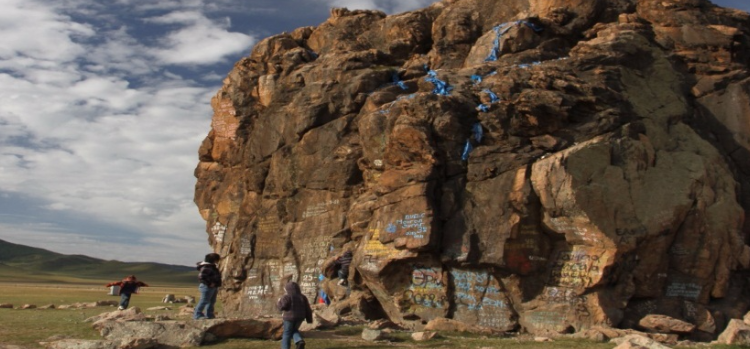
Terkhiin tsagaan lake
Terkhiin tsagaan nuur is an astonishingly beautiful lake with relatively pure fresh water.Torrents of lava issuing from the Khorgo volcano blocked the north and south Terkh rivers, so forming the dammed lake of Terkhiin Tsagaan Lake at an altitude of 2060 meters above sea level. The lake is 16 km wide, 4-10 meters deep with its deepest point at 28 meters and over 20 kilometers in length
Show more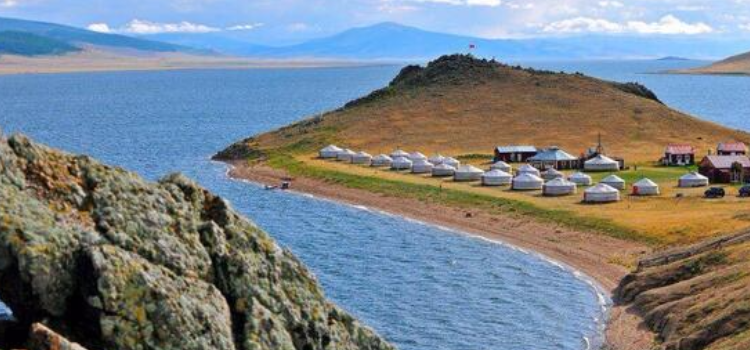
Khorgo
Khorgo is located on the northern part of Khangai Mountain Range at an altitude of 2200 meters above sea level. Khorgo is rich in beautiful scenery of mountains, cliffs, rapid streams, rivers, lakes, extinct volcanoes, green forests and pastures, where the long-haired yaks and horses pasture.
Show more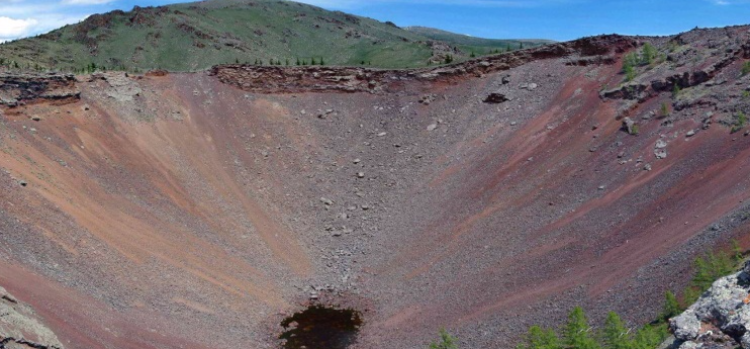
Lake Khuvsgul
Khuvsgul Lake is located in the northwest of Mongolia near the border to Russia, at the foot of the eastern Sayan Mountains. It is 1,645 m above sea level, 136 km long and 262 m deep. It is the second-most voluminous freshwater lake in Asia, and holds almost 70% of Mongolia's fresh water and 0.4% of all the fresh water in the world
Show more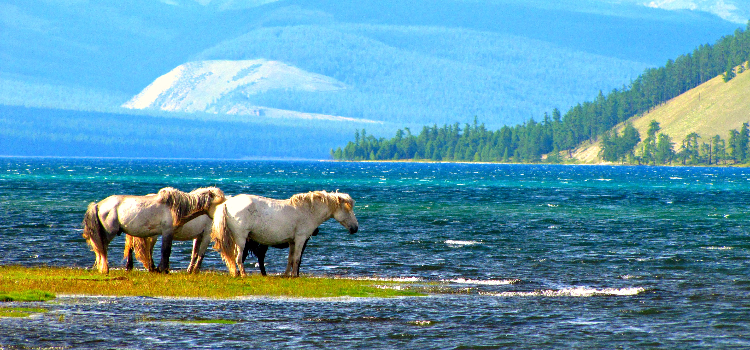
Moilt eco lodge
Булган аймгийн Баян-Агт сум бэлчээрийн болон аялал жуулчлалын нөөцөөрөө улсын хэмжээнд 1-р зэрэглэлд багтдаг. Тиймээс аялал жуулчлалын гол нөөц нь хөндөгдөөгүй унаган байгаль, түүн дээр зан ааш нь эвдрээгүй нутгийн сайхан зон олон, тэдний эрхлэх мал аж ахуй. Давуу тал болох зүйлс гэвэл Улаанбаатар, Хөвсгөл, Амарбаясгалант, Тэрхийн Цагаан нуур, Хархорин зэрэг аяллын гол бүс нутгуудийн төвд оршдог. Өөрөөр хэлбэл эдгээр цэгүүдийг холбож дунд нь амсхийх боломжыг олгох газар. Тэгсэн хэрнээ олон жуулчны бааз, тасралтгүй үргэлжлэх жуулчны урсгал, замын хөдөлгөөн зэргээс зайдуу байдал зэрэг нь бидний давуу тал болно
Show more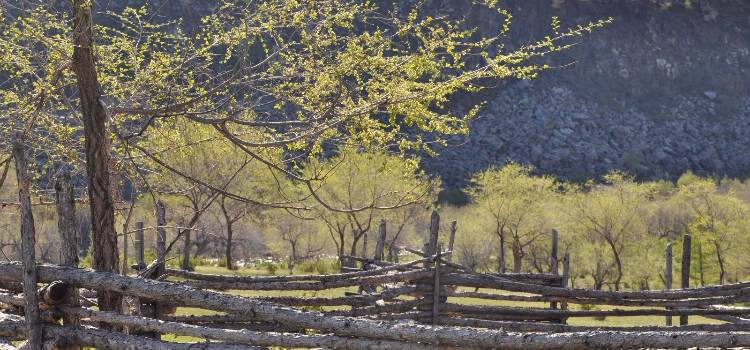
The Amarbayasgalant Monastery
Amarbaysgalant, one of the most important monasteries of Mongolia, located in the foot of Burenkhaan Mountain. It was built by Manchu Emperor between 1727-1736 with more than 40 temples in honor of Saint Zanabazar, the first Bogd and the great artist. The architectural construction of the monastery is amazing. The main style is Chinese while it combines little Tibetan and Mongolian architecture
Show more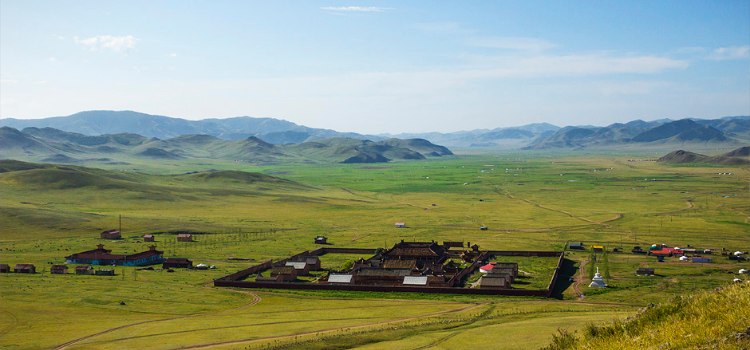
Tour price:
Tailored to fit your travel schedule, this tour package offers complete customization from May to October. Tour price per person, as detailed below.
Staying at tourist camp: Staying at nomad family:
2 pax – 4290 USD 2 pax - 3200 USD
3 pax –3900 USD 3 pax - 2800 USD
4 pax or more – 3400 USD 4 pax or more - 2400 USD
Price included: Price not included:
4* Hotel in Ulaanbaatar 1 night Travel insurance
Tourist camp 18 nights Visa fee
English speaking tour guide Hotel extra service
Transfer Alcoholic drinks
Meals as mentioned Any charges arising from major force
Entrance to sightseeings events beyond our control
National Park tax
Horseback riding
Folk art concert
Museum ticket
Drinking water
Terms & Conditions
Your holiday contract
When you book a tour or other travel arrangements our contract with you takes effect when we send you a written confirmation /by info@tourmongolia.com this e-mail address is being protected from spambots. You need JavaScript enabled to view it/ of booking. Once contract is made we are responsible for providing you with the tour you have booked and you are responsible to pay us for it, in each case subject to terms and conditions.

